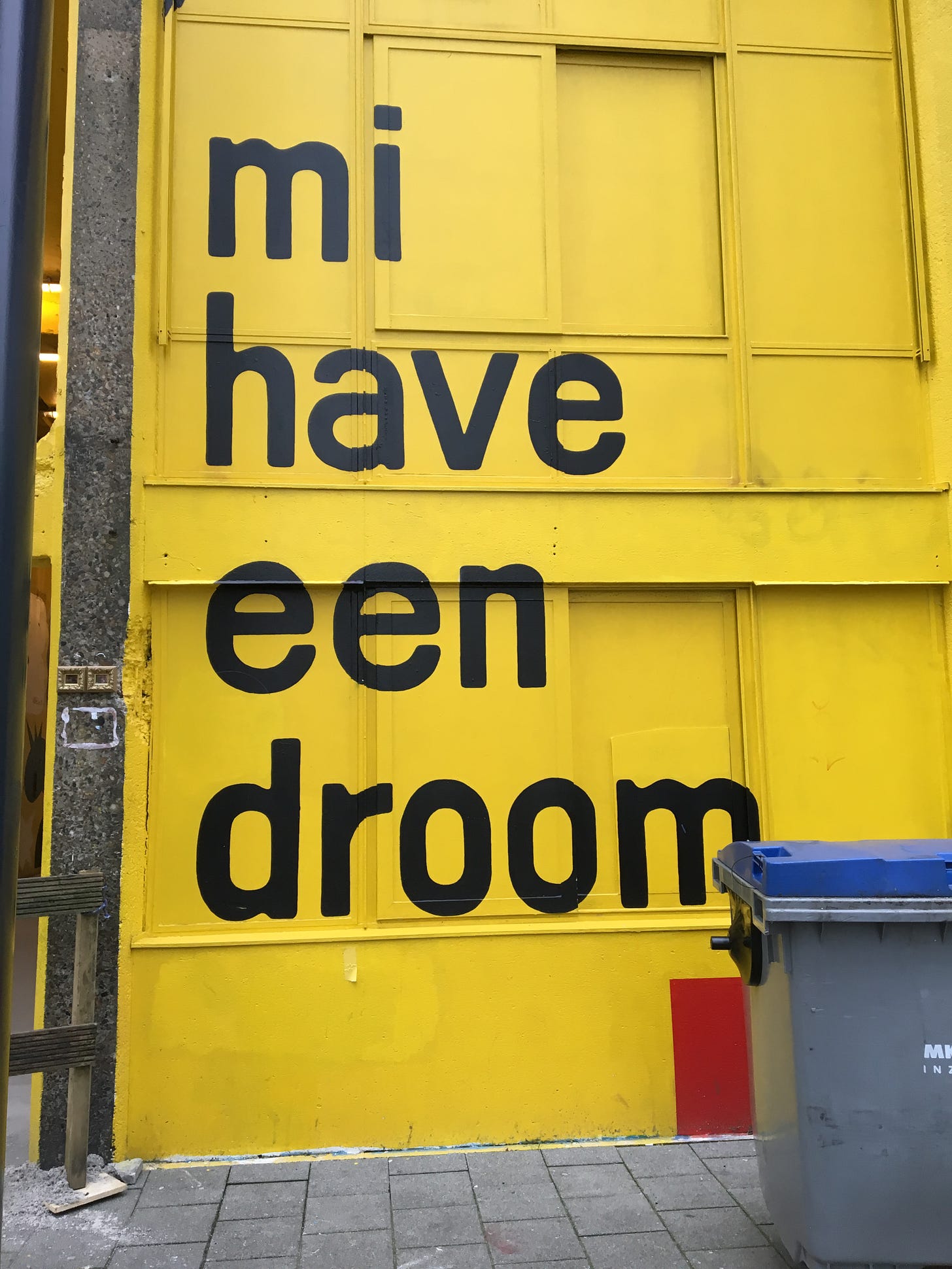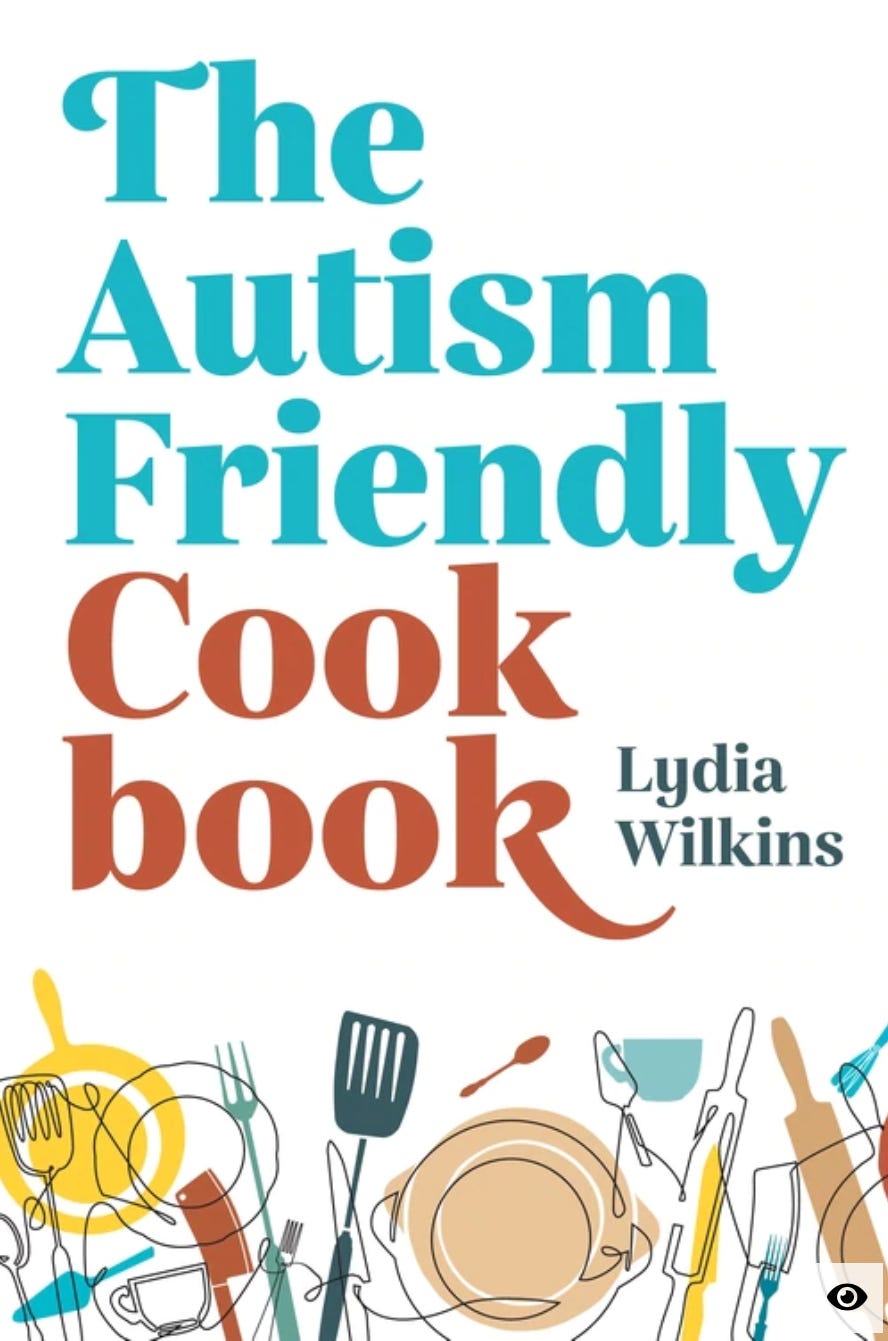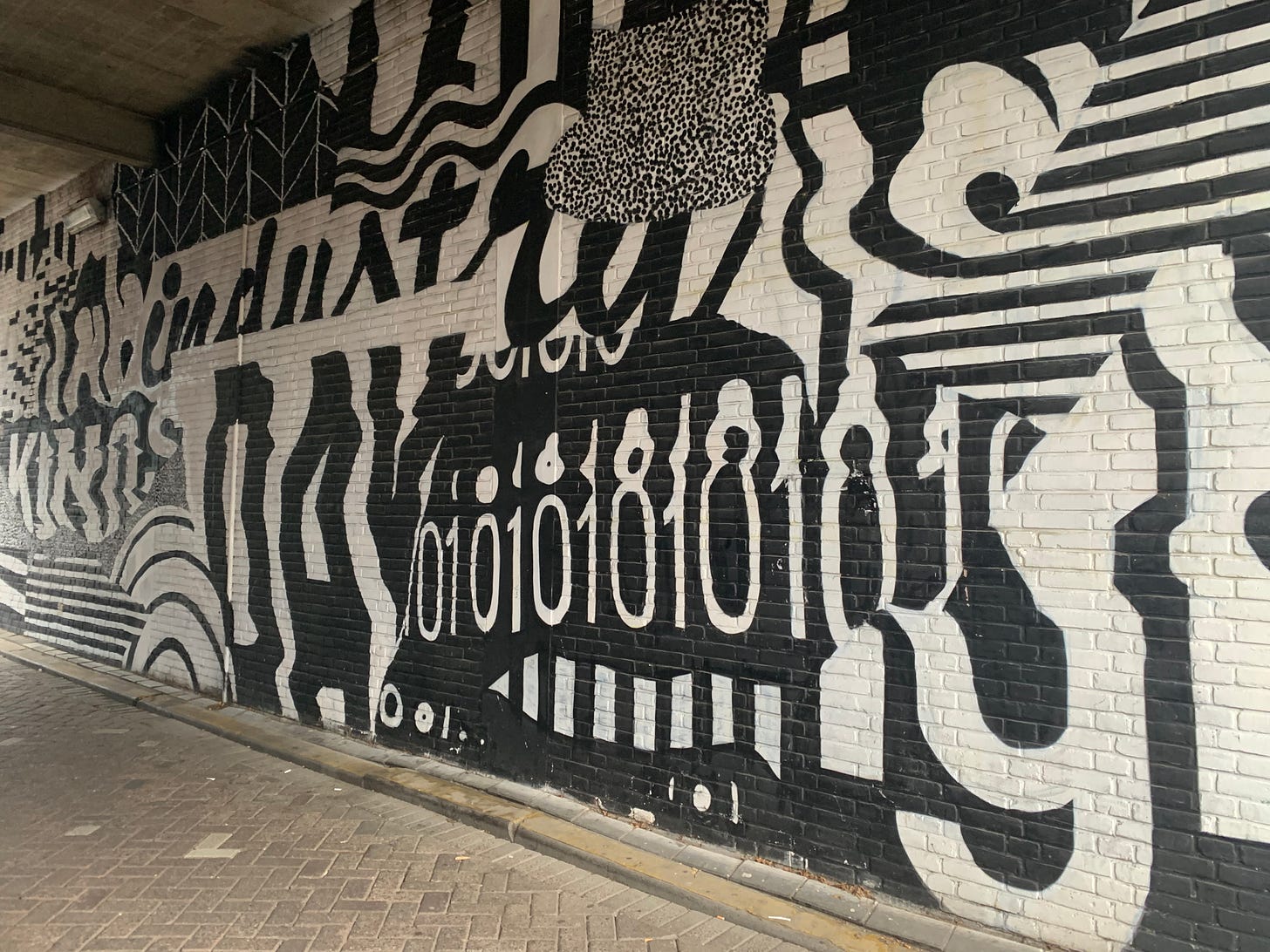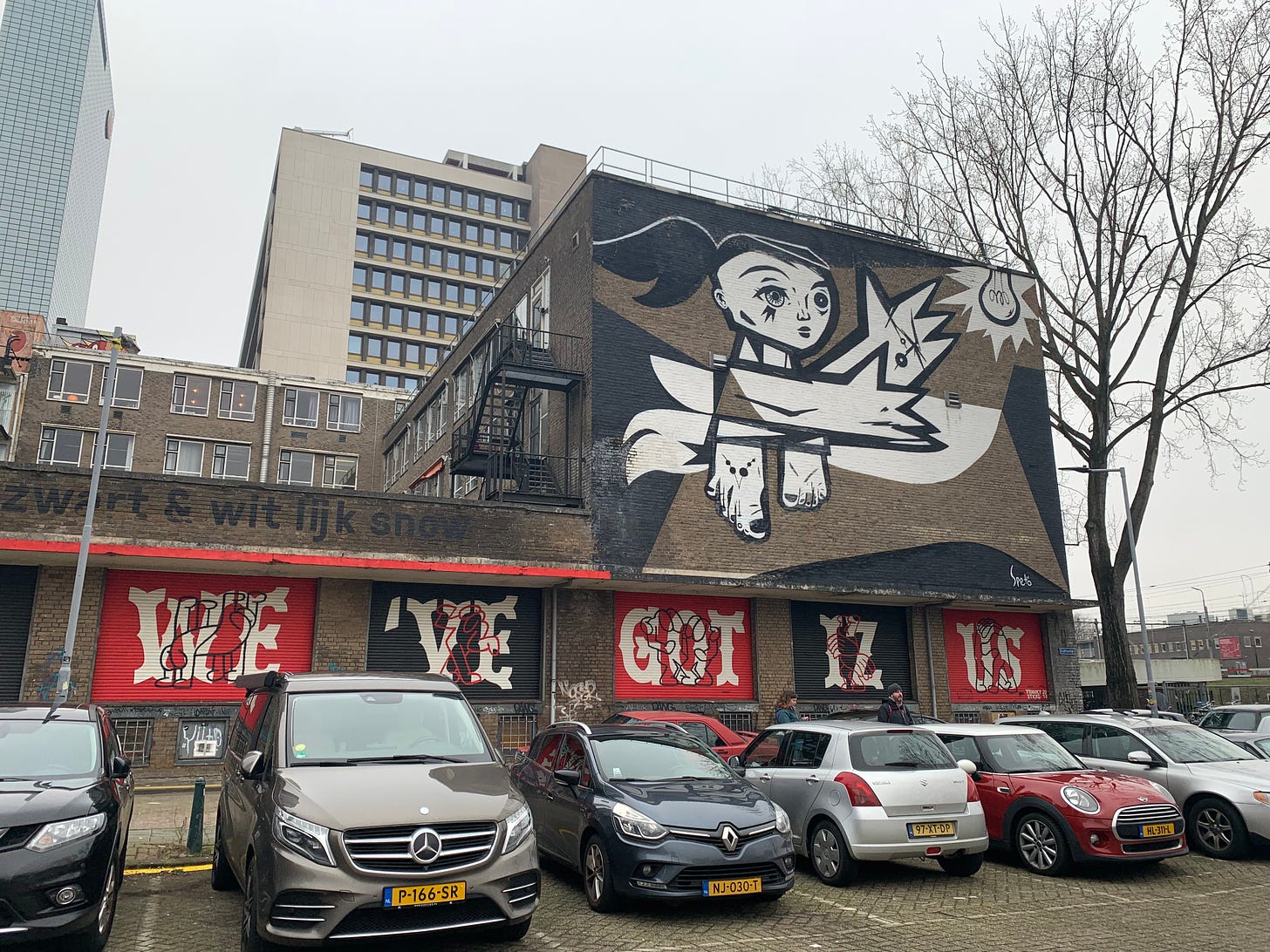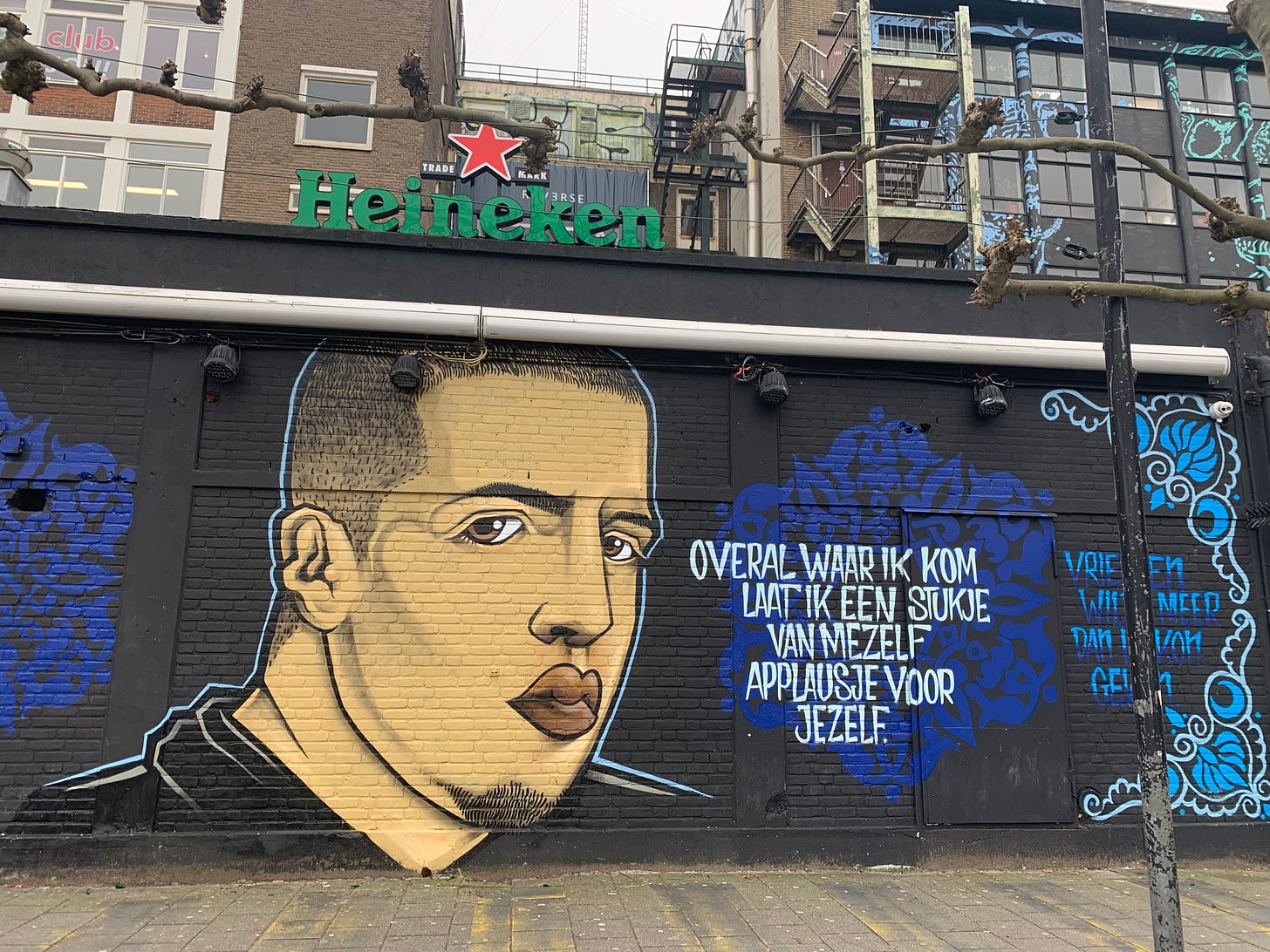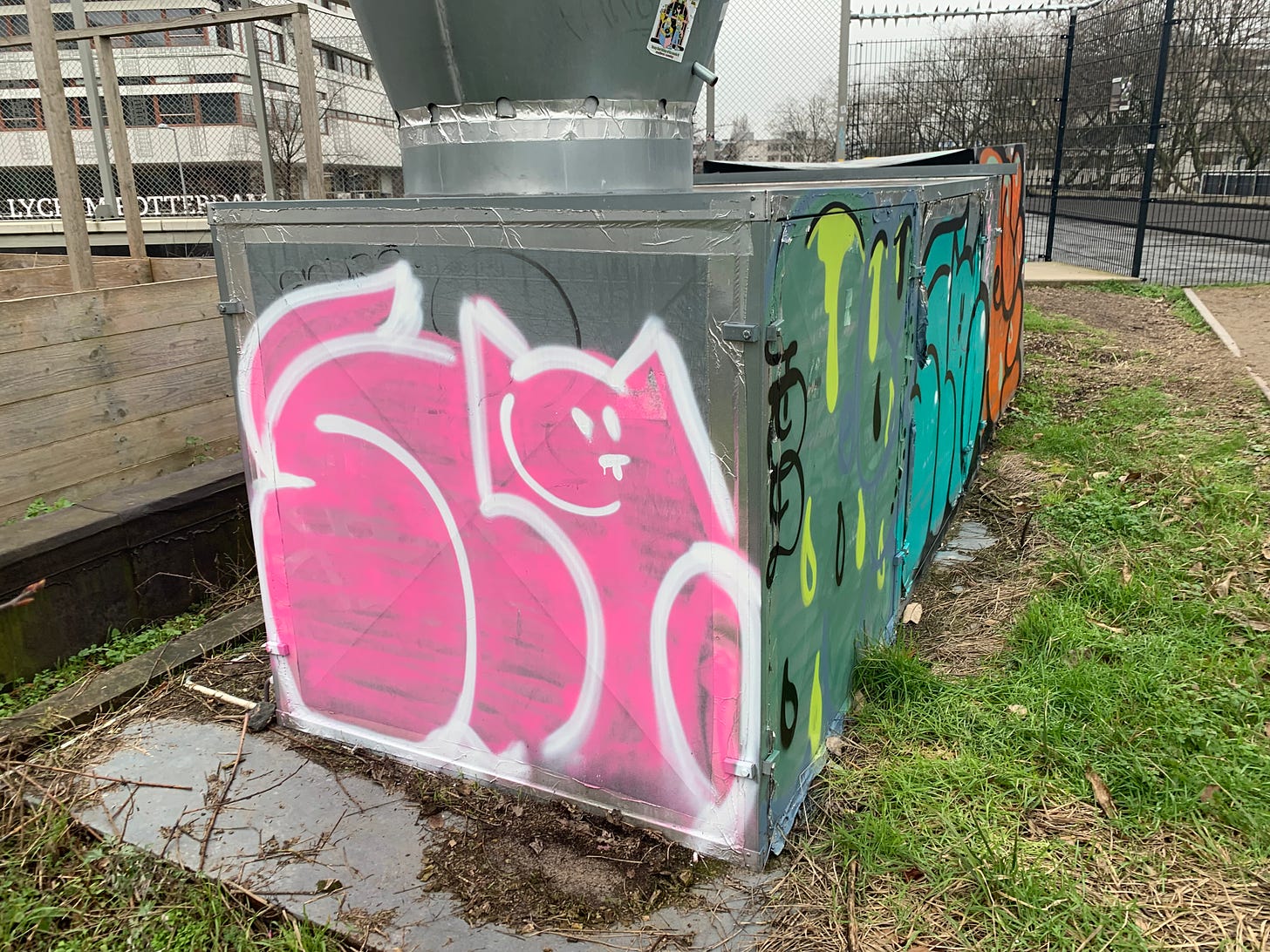This post was originally written last year - and it was about time that an old archived post was opened up for all to view it.
Last month I wrote a little bit on here about a getaway to Rotterdam - why I went, why January is a good time to go if you’re freelance and able to, as well as (partly) the reasons behind this. Rotterdam is one of the only cities that I feel relaxed, as well as the least anxious as there’s actually a degree of accessibility to me. Travel can be a bit stressful - which I have written about before.
But! Let’s talk about accessibility - and activities!
Street art is definitely something I’d recommend if you visit Rotterdam. It’s flat, lots of curb drops, and is largely free, too. (Some cities have tours you pay for - but you can go around for free, too.)
So! Paying subscribers. Here’s a little access audit type tour in your inbox - with notes on access, some ideas on location, what to expect, etc. This is an accessible activity, and I also felt really safe doing this, too. Sometimes it can be nice to just get lost in your own little world sometimes.
See you soon,
Lydia x
Out Now!
My debut book, The Autism Friendly Cookbook, is out now! And this is what people are saying about it….
Natasha Lipman, journalist and host of The Rest Room podcast: “The Autism Friendly Cookbook is a striking manifesto on the importance of accessibility in cooking. With adaptations front and centre, this book from Lydia Wilkins is sure to become a kitchen staple.”
Steve Silberman, author of NeuroTribes: The Legacy of Autism and the Future of Neurodiversity: “Cooking is one of the foundations of independent living. This charming, inviting book is designed to make this basic life-skill accessible to everyone. It's not just a collection of tantalizing recipes, it's a celebration of autistic community.”
Chloe Johnson, editor at Disability Review Magazine: “A delightful guide full of important information for neurodivergent foodies - we've needed this for years!”
My infatuation with Rotterdam began way back when; the Blogosphere was still a thing, influencers weren’t even a concept, and Instagram was sort of in its infancy, complete with #OOTD posts. Somehow Envy Fisher at Lost In Translation & I connected - and we began exchanging letters as pen pals. In 2018 I got to visit the city twice - and you can read all about that here.
My interest in ‘street art’ began back then; if I ever travel, I take photos in whatever city I’m in. It’s kind of like a digital collection, almost - an on and off ‘special interest’.
If you visit Rotterdam, this is what you need to know.
#1 Bring Your Warm Clothing, Comfy Shoes & Snacks
Unless you visit Rotterdam in summer, it will be cold. Trust me on this. I was the stereotypical Brit bundled up in winter woolies, topped off with red fingers! Warm clothing is a must, along with comfy shoes; you can end up travelling a long way.
Also: snacks! A self regulation *must*, and some art is not fully central - you may have to go out of your way to buy food. So. Bring the snacks!
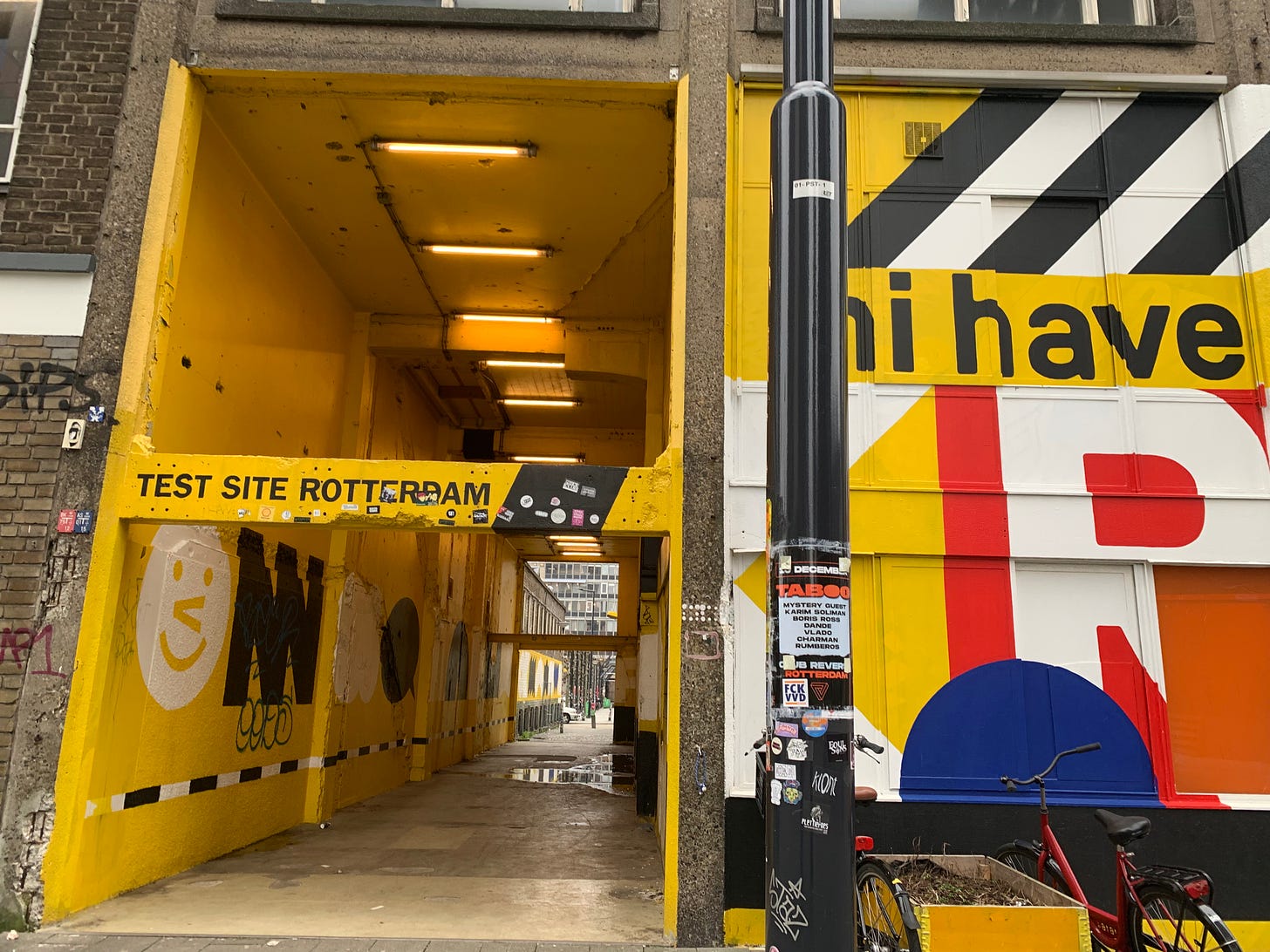
(I’d made the rookie error of going without the snacks - and in the cold this was not fun. )
Which brings me to my next point….
#2 Plan Where You Go
As an Autistic individual I have a lot of issues when it comes to executive functioning - however, though I struggle, planning is important to me, as it enables me to function just that little bit better. It also enables a bit more self regulation, and therefore a minimisation of meltdowns and associated pain.
However. Now I’m struggling with Covid related issues with my legs, planning has taken on a whole new meaning. I fall sometimes, and the kind of spasms I experience are uncontrollable. It creates issues when walking around, or if I stand still for even just a second too long. It can be embarrassing - and I’ll write a little bit more about getting myself a walking stick very soon, too.
Planning is a very good idea to get the most out of if you decide to go on a street art tour.
So. Plan it! Don’t be like me and go around with an outdated map. Better still, find yourself a guide…
#3 Rotterdam Currently…
Back in 2018, Rotterdam was a new and emerging place to visit. Anti-tourism laws in Amsterdam had made Rotterdam *the* place to go - plus, it’s very liberal, as well as being quite an artsy type place. There’s a lot of history to the place; Rotterdam was where Adolf Hitler strategically bombed as part of an offensive to occupy the country. The ‘old’ city is few and far between - you need to look for the pockets.
The pandemic has been unkind to Rotterdam in some respects.
Parts of the city have completely disappeared - my pen pal described it as gentrification. Properties have been boarded up or bought out by rich folk who have left the premises empty. Not a lot has changed in the street art scene for a while; an older generation have moved in, there isn’t a lot of new street art compared to the start of the pandemic.
It’s coming back, just really slowly.
#4 Notes On Access
Accessibility is at the heart of everything I do as a journalist and as a person; it took some research, but my book launch had a built in ramp for wheelchair users. This is just an example of really basic measures we can all take, proactively.
Going in search of street art can be tailored to multiple access needs.
Just make sure to refer to point #1.
Some parts of the city won’t always have step free access; I’m not entirely sure if the bridge behind the station does? But there’s some around the centre of the city, as well as murals - you just need to go and search a bit. Wrap up warm, and have a snack with you. Maybe headphones, too.
#5 The Technical Bit
And some technical notes on street art in Rotterdam for you…
Some of the murals are actually paid for commissions, such as when it comes to big names; an example of this is above. The idea of limiting illegal street art is focused in some areas more than others.
Murals are also attached more and more to buildings such as pubs, clubs and bars.
Gentrification and the replacement of the old neighbourhood means street art is not renewing as much as it once did; it’s generally seen as far more acceptable to create art on boarded up buildings that’ll later be flattened.
What do you think? Have you ever visited Rotterdam?



